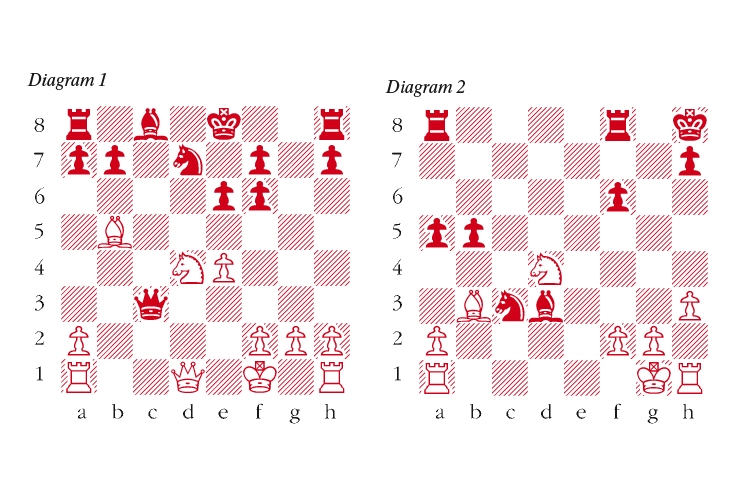The Vienna variation of the Queen’s Gambit is notable for a line in which the pieces conduct an elaborate dance around respective captures on opposite sides of the board. The variation has come into prominence as a result of a game from the recently concluded Berlin Candidates tournament. On the whole, in spite of the tactical complexities, Black appears to be emerging with safety, as is explained in the new book Queen’s Gambit Declined: Vienna by Krzysztof Panczyk and Jacek Ilczuk (Everyman Chess).
Ponomariov-Ivanchuk; Fidé World Cup, Khanty-Mansiysk 2011; Queen’s Gambit Declined, Vienna Variation
1 d4 Nf6 2 c4 e6 3 Nf3 d5 4 Nc3 dxc4 5 e4 Bb4 6 Bg5 c5 7 Bxc4 cxd4 8 Nxd4 Bxc3+ 9 bxc3 Qa5 This is typical of the variation. Black takes risks with his development and pawn structure in the interests of beginning an immediate counterattack. 10 Bb5+ Nbd7 11 Bxf6 Qxc3+ 12 Kf1 gxf6 (see diagram 1) This is a key position for the variation and one that has been seen in hundreds of games. 13 Nxe6 This looks powerful but Black’s calm reply gives him the advantage. More normal is 13 h4, planning the lateral development of the rook with Rh3. In Karjakin-Aronian, Berlin 2018, Black replied with the relatively unusual 13 … Qb4 (13 … a6 being the standard reply) and gained a comfortable position after 14 Rb1 Qd6 15 Rh3 a6 16 Be2 Nc5. Aronian went on to win. 13 … Qe5 13 … fxe6 would be a blunder on account of 14 Rc1 followed by 15 Rxc8+ when Black is destroyed. However, after the text move White’s initiative quickly fizzles out. 14 Nd4 White has regained his sacrificed pawn but completely lost the initiative. 14 … 0-0 At first sight it seems that White might stand well here as he has the better pawn structure and the black king may become vulnerable. However, the reverse is actually the case as Black will be able to develop very fast and when his rooks arrive on the central files the awkward situation of the white king begins to be felt. 15 Qd3 Nc5 16 Qg3+ Kh8 16…Qxg3 17 hxg3 Rd8 18 Nb3 Nxe4 was also very good for Black who now has an extra pawn. 17 Qxe5 fxe5 18 Nf3 a6 This isn’t necessary and only improves the position of the bishop. 18 … Nxe4 at once was preferable. 19 Bc4 Nxe4 20 Nxe5 f6 21 Nf3 Bf5 22 h3 b5 23 Bb3 Nc3 24 Nd4 Bd3+ 25 Kg1 a5 (see diagram 2) White is struggling as his king’s rook is not yet in the game and the black queenside advance is difficult to deal with. 26 Kh2 a4 27 Bd1 Bc4 Rejecting the complex line 27 … b4 28 Bf3 Rac8 29 Nc6 b3 30 axb3 axb3 31 Ra3 Be4 32 Rxb3 Bxf3 33 Ne7 Bd5 34 Rxc3 Rxc3 35 Nxd5 when Black has only slight winning chances. 28 a3 Rad8 29 Nc6 Rd2 30 Bf3 Rxf2 31 Rhc1 Na2 32 Re1 Rc8 33 Re7 Nc3 34 Nb4 f5 35 Rae1 Rg8 36 R7e5 Be2 37 Rxf5 The decisive mistake. The last chance to prolong resistance was 37 R1xe2 Nxe2 38 Nd3 Rxf3 39 gxf3 Nd4 40 Ne1. 37 … Bxf3 38 Rxf3 Rgxg2+ 39 Kh1 Rh2+ 40 Kg1 Ne2+ White resigns
Raymond Keene
Viennese Waltz

issue 28 April 2018




Comments